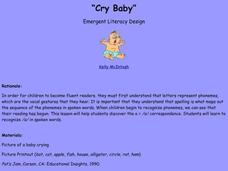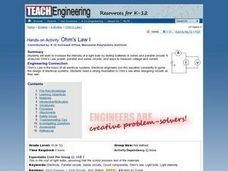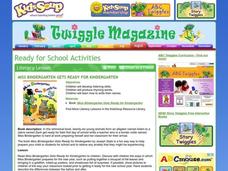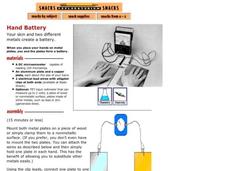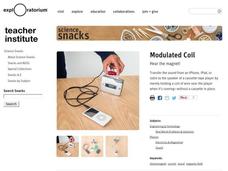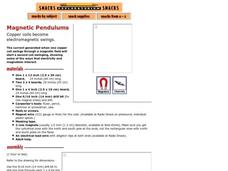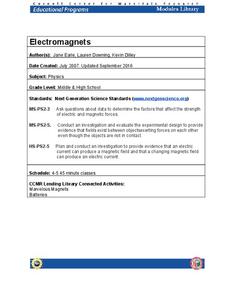Curated OER
Science: Down Home Dinosaurs
pupils participate in hands-on activities to discover the different types of fossils. Using teacher-provided materials, they make models of cast and trace fossils. After writing essays describing how traces are formed, students plan a...
Curated OER
A Cat Nap
First graders recognize the short vowel A in written and spoken language. Through matching activities, they discriminate the short vowel /a/ from other phonemes. Students associate the phoneme with its letter representation and read...
Curated OER
Batter's Up
Students recognize the short vowel a in written and spoken language. Through matching activities, they discriminate the short vowel /a/ from other vowel phonemes. Students associate the phoneme with its letter representation and identify...
Curated OER
Cry Baby
Students complete a variety of activities related to the short /a/ sound. They listen to a list of words and identify the words containing the short /a/ sound, and write the letter A. Students listen to the book "Cat Nap" and identify...
Curated OER
Cry Baby
Students recognize the short vowel a in written and spoken language. Through matching and listening activities, they discriminate the vowel sound /a/ from other phonemes. Students associate the phoneme with its letter representation...
Curated OER
Apple
First graders recognize the short vowel a in written and spoken language. Through matching and listening activities, they discriminate the vowel sound /a/ from other phonemes. Students associate the phoneme with its letter representation...
Curated OER
Animals Spiral Puzzle
In this animal puzzle learning exercise, students use a set of 8 clues about animals to complete a spiral puzzle. A reference web site is included for additional activities.
Curated OER
Learning about Titles
In this title worksheet, students read titles, then fill in blanks after reading short passages, selecting a title and then filling in facts.
Curated OER
Ohm's Law I
Students work to increase the intensity of a light bulb by testing batteries in series and parallel circuits. They analyze Ohm's Law, power, parallel and series circuits, and ways to measure voltage and current.
Curated OER
Miss Bindergarten Gets Ready for Kindergarten
Young scholars prepare for school and relieve anxiety they might be experiencing in regards to beginning school. In this Miss Bindergarten Gets Ready for Kindergarten lesson plan, students develop listening skills, produce rhyming words,...
Florida Center for Reading Research
Final Phoneme Spin
Segmenting words into different phonemes helps kids on the road to reading and writing. Have some fun with this spinner game which includes all the print-outs you will need. Simply assemble the spinner using a brad and lay out the...
Exploratorium
Hand Battery
Get hands-on in your physical science class by having learners conduct electricity with their own hands! By placing one hand on each of two different metals, a current can be generated and measured on a microammeter. Make an experiement...
Florida Center for Reading Research
Phonics: Letter-Sound Correspondence, Words Around Us Memory Game
Scholars employ memory and letter-sound skills like the classic game Concentration to succeed at this literacy game. Partners choose from rows of upside-down cards, trying to match letters to images with the corresponding initial sound.
Exploratorium
Modulated Coil
Transmit sound with an electromagnet. Class members follow the provided direction and build an electromagnet that will transmit sound though a cassette-tape player. As as extension they create an air core electromagnet and compare its...
DiscoverE
Design a Wind Turbine
Discover the power of wind energy. Learners design, build, and test wind blades in a hands-on experiment. They analyze the results to determine if they can make any improvements before gathering as a class to discuss their designs.
Perkins School for the Blind
Building a Basic Series Circuit
Make science a fully accessible subject for your learners with visual impairments. They'll use tactile models to explore the nature of basic electrical circuits. Template board, wires, batteries, and Velcro are used to construct the...
Curated OER
Can You See the Light?
Third and fourth graders use this worksheet to help them draw their own version of a fully functioning circuit. They see the battery, the light bulb, and two wires with clips. They must draw the complete circuit, using these elements, on...
Curated OER
Go To Sleep, Gecko!
Second graders examine the interdependence of organisms using the book "Go To Sleep, Gecko!" They examine a variety of food chains, listen to the book, and answer story comprehension questions. Students then conduct research on food...
Curated OER
Fuel Cell Experimentation
With rising oil prices and increasing concerns over global warming, the pressure is on for engineers to develop alternative sources of energy. Among the new technologies being developed are hydrogen fuel cells, which young scientists...
Exploratorium
Magnetic Pendulums
Passing a copper wire coil through a magnetic field influences another coil to also sway. It is with this demonstration that you can teach your physical science fans about electromagnetism. Note that the assembly requires about an hour,...
Cornell University
Electromagnets
Discover the connection between electric current and magnets. Scholars create electromagnets by passing a magnet through a coil. They experiment with different materials to determine the variables that affect the strength of the current.
DiscoverE
Electrical Liquids
Liquid or not, here comes the electricity. Scholars test the conductivity of various substances using a circuit that includes a light bulb. If the light bulb lights up, then the liquid is a conductor. What a bright idea!
Curated OER
Speaker
Students construct a sound speaker. For this technology lesson, students use magnet wires, a phono plug, a battery, and sandpaper to construct a homemade sound speaker.
Curated OER
Prairie Predator and Prey
Fifth graders brainstorm a list of animals that live on the prairie, and classify them as predators and prey. They conduct interviews where they ask the animals what they need to look out for to sustain life on the prairie.






